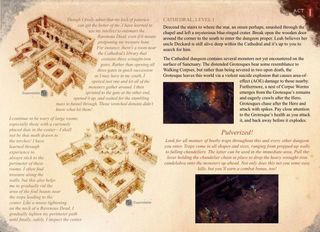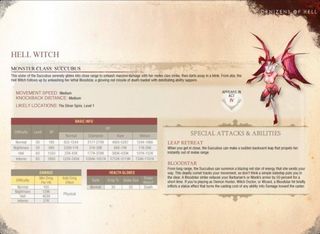Diablo 3 BradyGames guide review

Let's get meta: how about I write the review AND the first comment? “WTF strategy guides!?! Internet FTW!” Step back guys.
I'm not going to claim this is an unassailable masterpiece, because it has definite issues, but let's crack the biggest assumption right on the head – everything's on the internet. Books like this are never just about volume of information, but its presentation and emphasis. How are you going to write a guide, for example, about a dungeon-crawling loot-bagging game when the dungeons are randomly generated?
Here it's done through stories. Each area is given a general overview with stuff to look out for, but then there are little adventurer's logs that go through the potential situations Diablo 3's dungeons throw up again and again. Have a look at the text in the bottom left corner here:

Okay, it's a bit hokey, but isn't it neat? It strikes a nice balance between providing useful information and giving a little taste of Diablo 3's world, and the writers have come up with a way to handle something as inconvenient as random generation in a strategy guide. Flavour like this is why I dig guides for the games that deserve them, because as close to fan-fiction as it may be, you feel the glow of a shared experience.
The bestiary is the finest part of this guide, giving an overview on every monster and variant and their changing stats on each difficulty level – as well as, for the nastier nasties, explaining how their attacks and debuffs work (and the difference in effect on each class, where necessary.)

But for everything the Diablo 3 guide gets right, there are some issues. The class skills are explained in detail and with explanations of how best to use them, but in a step-by-step process going through dozens and dozens of abilities. There's no overview of how these blend together into a particular build, let alone sample builds, and no sense of how the class progresses overall as it levels. Hardly a deal-breaker, but exactly the kind of thing a guide needs to offer if you're not to be running off to the internet.
This is also the first time that real effort has been put into the tablet version of a strategy guide, and what's happened here almost breaks my heart. In terms of navigation and content it's often excellent, doubling or tripling-up on browsable screens, including boss strategy videos, and easy to find your way around. But it doesn't support the resolution of the current iPad model, which means an often gorgeously designed source page is left looking pretty rough in translation.
The biggest gaming news, reviews and hardware deals
Keep up to date with the most important stories and the best deals, as picked by the PC Gamer team.
With all of that said, this still charmed me. You can't be dismissive of the sheer labour that's gone into such a tome, something that can veer from cod-fantasy through straight explanation to pages upon pages of weapon stat tables. The last guide I used with any seriousness was for Dark Souls, and this has a similar feel – something that'll sit around the house over the next few months, absorbed in 20-minute chunks when its gargantuan subject has me curious about one of its dark corners. I've always thought 'strategy guide' was a bit of a misnomer, because you don't really use them as guides for strategy so much as reference books, an adventurer's companion. With all its kinks, the Diablo 3 guide still feels like a worthy one.
Rich is a games journalist with 15 years' experience, beginning his career on Edge magazine before working for a wide range of outlets, including Ars Technica, Eurogamer, GamesRadar+, Gamespot, the Guardian, IGN, the New Statesman, Polygon, and Vice. He was the editor of Kotaku UK, the UK arm of Kotaku, for three years before joining PC Gamer. He is the author of a Brief History of Video Games, a full history of the medium, which the Midwest Book Review described as "[a] must-read for serious minded game historians and curious video game connoisseurs alike."
Most Popular


